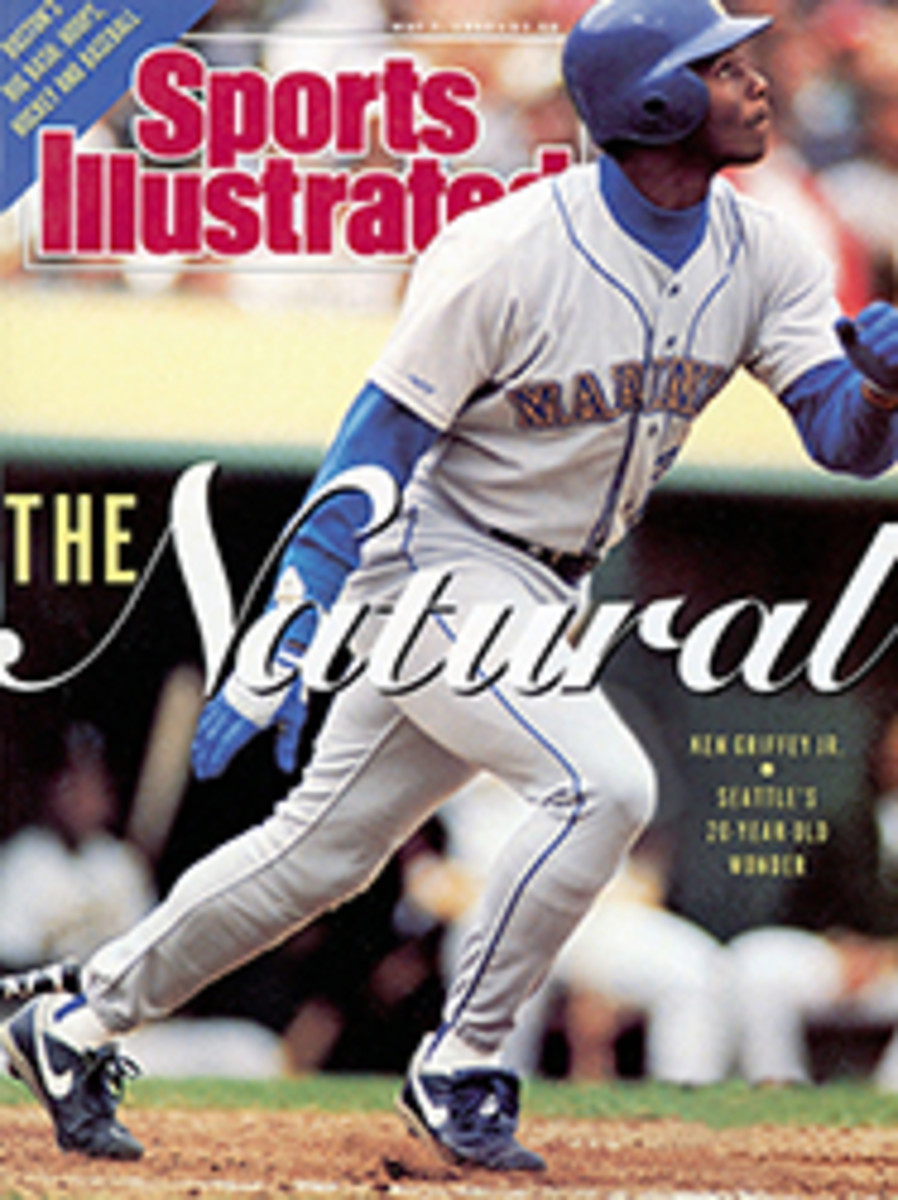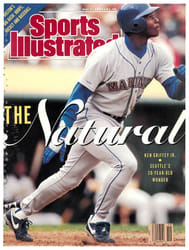
SCORECARD
FINISH LINE
Ever since the Mercury Bay Boating Club, in the person of Auckland financier Michael Fay, challenged the San Diego Yacht Club (SDYC) in 1987 to what was supposed to be an America's Cup match but turned out to be a spitting contest, the combatants and their lawyers have engaged in a wearisome tacking duel. Last week, after 2½ years of litigation, they finally crossed the finish line.
By a 5-2 vote, the State of New York Court of Appeals upheld a lower-court ruling that San Diego's September 1988 Cup defense in the 60-foot catamaran Stars & Stripes against Fay's 133-foot monohull challenger New Zealand was legal, even though the boats were of such radically different designs that the event was a mismatch. Stars & Stripes, skippered by Dennis Conner, routed New Zealand 2-0, winning the first race by 2½ miles and the second by more than four miles.
The Cup, which has been locked in a New York bank vault pending the court's decision, will now be returned to the SDYC. And in May 1992, San Diego will get to host the kind of America's Cup extravaganza it had in mind before Fay made his unexpected challenge. So far, 14 challengers from 11 nations have signed on for the '92 trials, and seven more have expressed interest. As many as 10 U.S. syndicates, including one led by Conner, might compete for the right to defend the Cup.
Out of the America's Cup rancor has emerged a document that may prevent such unseemly circuses in the future. The San Diego Protocol, which was signed by current and former Cup trustees after the 1988 races, is essentially an agreement to try to behave civilly from now on and to refer disputes to a panel of trustees instead of to a court of law.
While the protocol is not mischief-proof, it has fostered a spirit of cooperation and the adoption of a new measurement rule for Cup boats. Henceforth the Cup will be contested in International America's Cup Class (IACC) boats, which replace the 12-meter yachts in use from 1958 to '87. The typical IACC boat will be 20% larger and 30% lighter than a Twelve and will carry almost half again as much sail. Says veteran Cup competitor Bruno Troublè of France, who has sailed in one of the new IACC yachts, "She looks like a big 18-foot skiff, reacts like a dinghy and is much more exciting than we expected her to be."
Despite their rough ride in American waters—legal and otherwise—the Kiwis will try for the Cup again in '92. As Toby Morcom, sheep farmer and Mercury Bay commodore, put it last week, "We are not renowned for backing down."
A GIANT COINCIDENCE
A fellow named Willie Mays usually drives the University of Toledo baseball team's bus. When he couldn't make a recent trip, his company sent in his place a driver named Dusty Rhodes.
THE TIP IS TAP
SI's Bill Nack, who has correctly picked the winner of the Kentucky Derby four of the past seven years, previews this Saturday's 116th running of the event. Over the winter, when such promising 3-year-old lights as Grand Canyon, Red Ransom and last year's 2-year-old champion, Rhythm, fell like tin soldiers on their way to the spring classics, it appeared that this year's Derby would be a ho-hum affair, with little to recommend it as either a sporting event or a betting enterprise.
All that has dramatically changed. This Derby emerges as a contest longer on talent and richer in possibilities than anyone might have imagined. Of the 17 Derby candidates, at least seven have a solid shot at wearing the roses: Summer Squall, Mister Frisky, Thirty Six Red, Unbridled, Silver Ending, Land Rush and Pleasant Tap.
No doubt the smart-money favorite will be Summer Squall. Though not much to look at—he's a narrow bay of light flesh, and you can count his ribs when he is unsaddled—Squall has nonetheless proven himself a game, gifted colt who flourishes in the heat of battle. In his last Derby prep, the nine-furlong Blue Grass Stakes, he lost the lead to Land Rush on the turn for home but came back to win by almost two lengths. He's a known bleeder, but he's still the horse to beat.
To win, of course, he'll have to outrun sentimental favorite Mister Frisky, the ill-bred winner of the Santa Anita Derby and, at 16-0, the only undefeated horse in the race. Like Summer Squall, Mister Frisky runs as if his next bag of oats depended on it. So does Thirty Six Red, winner of the recent Wood Memorial at Aqueduct. A beautifully bred son of Slew o' Gold and grandson of Seattle Slew, Red has the 1¼-mile Derby distance programmed in his genes.
Among other top prospects, Silver Ending, who cost his owner only $1,500, looked like a million winning the April 21 Arkansas Derby. Florida Derby victor Unbridled has been training with gusto and will be tough on a fast track.
And Pleasant Tap, a son of 1981 Derby winner Pleasant Colony, arrived at Churchill Downs on Saturday kicking and squealing and looking as if he wanted to eat his stall for lunch. He whipped none other than Grand Canyon in the Sunny Slope Stakes at Santa Anita last October, and since then has shown talent, most recently in finishing second in the Lexington Stakes at Keeneland shortly after recovering from a cough.
There will be lots of speed in this Derby: Fighting Fantasy, Burnt Hills, Frisky, Squall, Red, Real Cash. The question is, Who is rising fastest to the moment, and who can get the trip?
I'm taking a long shot: Pleasant Tap.
COLOR BARRIER?
In selecting their team's most valuable player, Orlando Magic fans seem to have used criteria that were mystifying at best, despicable at worst. In voting sponsored by the team, a newspaper and a supermarket chain, fans chose reserve guard Scott Skiles, who played only 21 minutes per game and whose 7.7-point scoring average ranked him ninth among Magic players. Skiles received 28% of the 5,000-plus votes, followed by the team's leading scorer, forward Terry Catledge (19.4), with 21%.
Perhaps not incidentally, Skiles is white, while the eight players who out-scored him are black. Said one Orlando starter, "It was an insult to all black players. The fans said a lot about themselves. They just reminded everyone that this is the South."
Team officials would not comment, but Jim Shively, vice-president of the public relations group that helped coordinate the vote, said that Skiles was the fans' favorite because "they like his gritty attitude" and because Skiles makes so many public appearances to promote the team. Shively added, however, that "we're thinking of having sportswriters around the state pick the team MVP next year and have the fans pick their most popular player."
A HERO RETURNS
As he took the field for his team's first spring football practice two weeks ago, Long Beach State junior Mark Seay received, fittingly, a hero's welcome. Seay was the 49ers' leading receiver in 1988, but his season ended on Oct. 30 that year when he was shot by a gang member at a children's Halloween party in Long Beach. Earlier that day, Seay had made the mistake of saying, "What's happening, blood?" to a teenage member of a gang called the Crips who happened to ride his bicycle past Seay's sister's house; the teen, insulted that Seay would address him by the name of the Crips' archrivals, the Bloods, came back in a car and sprayed the house with gunfire. While shielding his two-year-old niece, Tashawnda, Seay was hit with a .38-caliber bullet that ripped through his right kidney and lodged one inch from his heart. The kidney is now gone, but the bullet remains. The assailant is serving 25 years for assault with a deadly weapon.
Seay, a criminal justice major who frequently counsels youngsters against joining gangs, came back in April 1989 to participate in spring drills. That summer, however, Long Beach State told him he couldn't play for the 49ers because the risk of injury to his remaining kidney was too great. In August 1989 Seay sued the university, contending that the decision whether or not to play should be his alone.
Last September a judge ruled that there wasn't clear proof that Seay's kidney was functioning properly and denied him an injunction that would have allowed him to play. But in March, with a jury trial about to begin, Long Beach State settled out of court, agreeing to let Seay play if he signed a waiver absolving the school of liability. As part of the agreement, Seay will wear a flak jacket while playing.
The university's concerns are legitimate. The National Kidney Foundation advises kidney donors against participating in contact sports. "You can live a normal existence with one kidney, but you must take precautions," says foundation president Dr. Saulo Klahr. "In a contact sport like football, the remaining kidney might suffer trauma and bleed. He's putting his health at serious risk."
Seay is willing to take his chances. "Before I lost a kidney, there were risks in my playing football," he says. "The percentages are still the same. If I'm going to lose this kidney, it could happen at home. Or I could be driving or walking down the street. I'd rather lose it doing something I want to do."
—STEFANIE KRASNOW
PHOTO
BILL LUSTER
Our Derby diviner says to keep your eye on Pleasant Tap.
PHOTO
GEORGE TIEDEMANN
Seay, who lost a kidney to a gang member's bullet, is risking his health by playing.
THEY SAID IT
•Dale Earnhardt, NASCAR driver, enunciating his racing philosophy: "You win some, lose some and wreck some."

